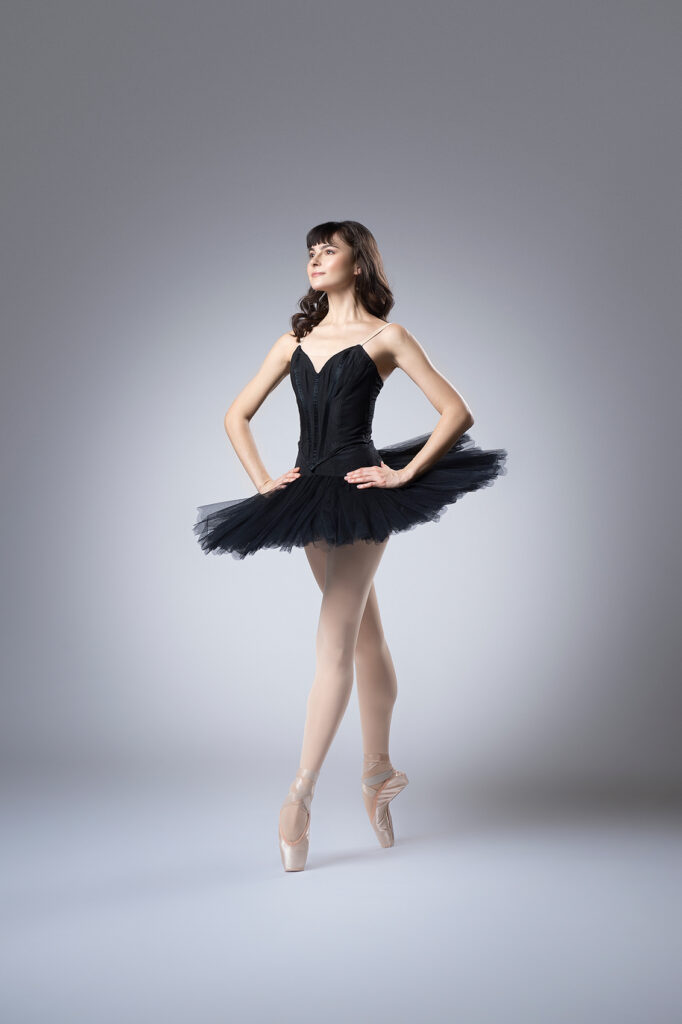The collaboration between the Australian Ballet and La Trobe University seeks to meld the culture of excellence at both institutions. The research scope is broad and seeks to explore dancer health and wellbeing. The studies that are currently being conducted in relation to dancers include those in wellbeing monitoring and mindfulness, posterior ankle impingement, foot pain, hip muscles and movement and cognitive fatigue.
Investigators:
Dr Katia Ferrar is the Research Fellow for the La Trobe University and The Australian Ballet Partnership and conducts dance-related research at LASEM.
The La Trobe University and The Australian Ballet Partnership is led by Prof Jill Cook and Dr Sue Mayes.
Prof Jill Cook is professor of musculoskeletal health in LASEM at La Trobe University.
Dr Sue Mayes is Director of Artistic Health at The Australian Ballet and Adjunct Research Fellow at La Trobe University.
Ballet dancers routinely place their hips into extreme ranges and positions. This study seeks to examine 3D motion capture data of ballet dancers performing typical ballet movements to understand better how their hips move. The research will explore whether hip and pelvis movement is different in symptomatic dancers compared to their asymptomatic peers. The project will also explore whether doing the same movement with (e.g. holding the barre) vs without support (in the centre) changes joint or pelvic mechanics. The information may help improve dance technique coaching and hip pain management strategies for professional ballet dancers.
This project explores hip muscle size, and the differences between dancers and athletes, and the association to hip pain. This project is being carried out by a staff physiotherapist at The Australian Ballet (Sophie Emery) and also forms part of Rachael McMillan’s PhD project. Understanding hip muscle size and the relationship to pain may lead to more effective injury prevention and management strategies.
This research aims to explore the differences in MRI findings related to posterior ankle impingement syndrome between dancers and athletes and explore the links between clinical findings and MRI findings in symptomatic and asymptomatic ankles. On completion, this research will provide much needed insight into the significance of imaging in the diagnosis and management of posterior ankle impingement syndrome. The body of research forms the Masters program for Peta Baillie.
The foot pain research will be carried out by the inaugural La Trobe University Bronwyn Schlotterlein PhD Scholarship doctoral student. Ankle and foot are the two most prevalent regions of injury in The Australian Ballet and this pattern is typical in professional dance companies around the world. This body of work will explore the links between foot pain and the intrinsic foot muscle size in dancers, athletes and the general population, and to develop an intervention to strengthen these muscles and improve pain levels and foot function. The body of work is a collaboration with University of Tasmania (Prof Tania Winzenberg, Jason Rogers and Prof Graeme Jones), The Australian Ballet (Dr Sue Mayes) and La Trobe University (Dr Katia Ferrar, Prof Jill Cook, Dr Karen Mickle and Dr Adam Semciw). The project will provide crucial evidence to direct the management of foot pain in all populations.
The overarching aim of the wellbeing study is to explore the self-reported wellness of professional ballet dancers and investigate the wellbeing impact of a mindfulness-acceptance-commitment intervention. To achieve these aims, the project will first develop and pilot a wellness reporting mobile application specifically for professional ballet dancers. The body of research forms the PhD program for Carly Harrison.
This research explores cognitive fatigue in professional ballet dancers. Cognitive fatigue has been linked to reduced physical performance in athletes, but little is known regarding the impact of cognitive fatigue on ballet dancers. A greater understanding of cognitive fatigue will lead to management and prevention strategies and reduced injury and improved performance in ballet dancers.

